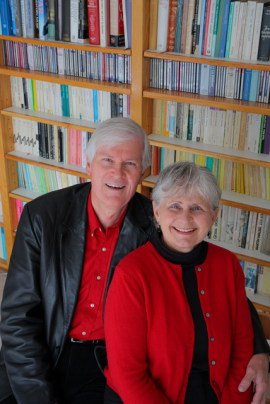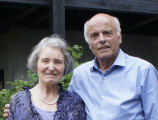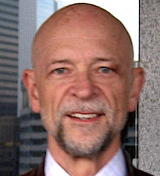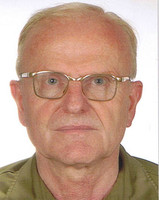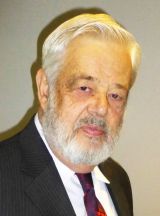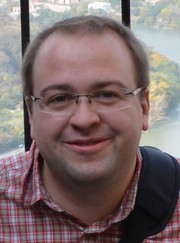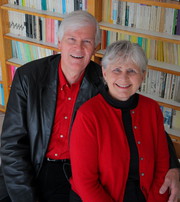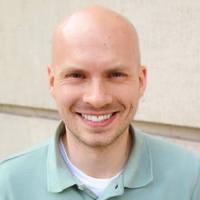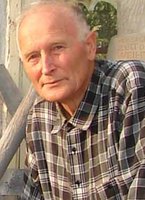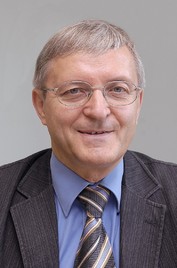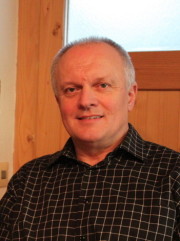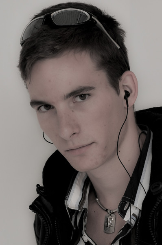Vita
Alan Keele wurde 1942 in Provo (Utah) USA geboren. Er besuchte in Springville (Utah), Laramie (Wyoming), Spanish Fork (Utah) und Bicknell (Utah) die Schule. Er machte 1960 den Abschluss von der Wayne High School (Bicknell) und fing mit 17 seine Studien an der Universität von Utah in Salt Lake City an, wo er vorerst Chemie studierte. Er bekam ein Stipendium vom dem Internationalen Rotary Club dafür.
Nach etwas mehr als einem Jahr an der Universität wurde er als Missionar nach Deutschland berufen und zwar nach Frankfurt am Main. Dort diente er von Januar 1962 bis Juli 1964, und zwar in Offenbach, Kassel, Neustadt an der Weinstraße, Frankfurt, St. Ingbert, Völklingen und Saarlouis.
Nach der Mission wurde Alan Keele von einem früheren Mitarbeiter, Marlin K. Jensen, eingeladen, auf die Brigham Young Universität umzusiedeln, um auf der ersten Sprachmission damals, der sogenannten Language Training Mission, Deutsch zu unterrichten. Es ergab sich dann, daß er auf Germanistik umsattelte und machte 1967 den Baccalaureus in Germanistik und Geschichte. Er ging dann 1968 nach Princeton, wo er 1971 den Doktorgrad in deutscher Sprache und Literatur erwarb. Er wurde 1971 Juniorprofessor an der Brigham Young Universität. Der Reihe nach wurde er dann außerordentlicher und schließlich ordentlicher Professor der Germanistik.
Alan Keele hatte dann über fast vier Jahrzehnte an der Universität allerhand unternommen. Er war für die Fakultät Germanistik und Slavistik acht Jahre lang der Vorsteher. Er hatte auch als Vize-Dekan des Programms für Begabtenförderung (Honors Program) und Allgemeinbildung (General Education) gedient und dabei ziemlich viele Initiativen in die Wege geleitet, wie zum Beispiel die Freshman Academy, ein Unterstützungsprogramm für Studenten im (gefährlichsten!) ersten Jahr, wo die meisten Studenten scheitern.
Er wurde 1992 zum Honors Professor des Jahres erkoren. 1995 bekam er den Abraham O. Smoot Preis für sein Engagement in der Verwaltung der Universität. 1996 erhielt er die Karl G. Maeser Stiftungsprofessur für Allgemeinbildung. 2007 bekam er die Alcuinprofessur für Allgemeinbildung und auch die Ludwig-Weber-Siebachprofessur für Humanities und Germanistik.
Alan Keele hatte ein breites Sortiment Kurse gelehrt, nicht nur in deutscher Sprache und Literature (deutsche Opern, deutsche Lieder, Gruppe 47, Günter Grass, Hermann Hesse, Rainer Marie Rilke, den Feminismus im deutschen Roman...) sondern auch im Honors Program (z.B.: Die Feder und das Schwert, einen Kurs über Krieg und Frieden). Er hatte sechsmal Halbjahresauslandsprogramme nach Deutschland und Österreich mit jeweils 30 bis 70 Studenten organisiert. 2010 wurde Professor Keele emeritiert.
Alan Keele ist mit Linda Kay Sellers Keele verheiratet. Sie haben sechs Kinder und 12 Enkelkinder. Er war zweimal Bischof, einmal für alleinstehende Studenten und einmal für verheiratete Studenten an der Universität. Die Keeles haben acht Jahre als Tempelarbeiter verbracht. Er war auch Gemeindemissionsleiter, Chorleiter, Institutslehrer und PV-Lehrer.
Werk
Stand: August 2014
Deutschsprachige Veröffentlichungen und Vorträge
1. Jugendliche gegen Hitler: Die Helmuth Hübener Gruppe in Hamburg 1941/42, Berg am Starnberger See, Verlagsgemeinschaft Berg, 1991, 247 pp., with Blair Holmes and Karl Heinz Schnibbe.
2. “A Translation of Goethe’s ‘Mahomets Gesang,’”in: Kulturpolitik und Politik der Kultur / Cultural Politics and the Politics of Culture, Festschrift für Alexander Stephan / Essays to Honor Alexander Stephan, German Life and Civilization, vol. 47, ed. Jost Hermand, Peter Lang, Bern, 2007, pp. 439-441, with Leslie Norris.
3. “Prolegomenon zu einer konkordanten Kempowskiforschung,” in : Was das nun wieder soll? Von ‘Im Block’ bis ‘Letzte Grüße’. Zu Werk und Leben Walter Kempowskis, Göttingen: Wallstein Verlag, 2005, eds. Carla A. Damiano, Jörg Drews, and Doris Plöschberger, pp. 101114.
4. “Die Atom-Tiger von Manhatten,” Dokumente, Zeitschrift für Übernationale Zusammenarbeit, Cologne, December 1974 (4/30th year), pp. 12-16.
5. “Paul Schallück,” Literatur Lexikon, ed. Walter Killy, Munich: Bertelsmann, 1991, v. 10, p.158
6. “Präexistenz, ewige Ehe und Apotheose: eine Untersuchung dreier verwandter ‘Mormonen’Ideen in deutschen Film- und Operntexten” Invited multi-media “Forum” lecture given to six LDS Institute audiences in Munich, Frankfurt, Berlin, and Heidelberg (Germany), as well as in Vienna and Linz (Austria) during November and December, 2004.
7. “Helmuth Hübener und der Mut, sich auf die Seite des Guten zu stellen,” invited lecture with follow-up discussions at the European Area Young Single Adult Conference (JAE Tagung) in Obertrum bei Salzburg, Austria, August 2-6, 2006.
8. “Mozart, Schickaneder, Smith: Tempelehe und Vergottung in der Zauberflöte und bei den Mormonen,” invited Inaugural Lecture for the new LDS Outreach Center in Vienna, Austria (Florianigasse 4), June 14, 2007.
9. “Helmuth Hübener und die Zukunft der internationalen politischen Macht der ‘Mormonen’” Invited lecture at the European Area Young Single Adult Conference (JAE Tagung) in Eringerfeld bei Paderborn, Germany, August 7, 2007, with the kind participation of guest experts Ulrich Sander and Merit Knees-Steffel.
10. “Helmuth Hübener und die Implikationen für Amerikaner der Ära Bush” Invited lecture at the European Area Young Single Adult Conference (JAE Tagung) in Eringerfeld bei Paderborn, Germany, August 12, 2008.
11. “Die Kunst als Botschafter des Glaubens: eine Einführung in drei grosse Kunstwerke, welche drei ‘mormonische Ideen’ bestätigen” Invited lecture at the European Area Young Single Adult Conference (JAE Tagung) in Eringerfeld bei Paderborn, Germany, August 13, 2008.
12. “Einführung in die Zauberflöte: die celestiale Ehe und die Gottwerdung bei Mozart” Invited lecture at the European Area Young Single Adult Conference (JAE Tagung) in Eringerfeld bei Paderborn, Germany, August 14, 2008.
13. “Einführung in die Frau ohne Schatten: Prä-Existenz und Apotheose bei Hofmannsthal und Strauss” Invited lecture at the European Area Young Single Adult Conference (JAE Tagung) in Eringerfeld bei Paderborn, 15. August 2008
14. Wortkonkordanz zur “Deutschen Chronik” von Walter Kempowski. Georg Olms Verlag, Hildesheim, Germany, 1994, equivalent of 10 volumes with 9,180 pages on 34 microfiches. (Also in electronic “Word-Cruncher” format.)
15. Wortindex zur “Blechtrommel” von Günter Grass, Frankfurt am Main, Luchterhand, 1990, xi + 380 pp., with Randall L. Jones and Franz Josef Görtz
Gesamte Veröffentlichungen und Vorträge
- Scholarly Books (author, co-author, editor):
- Paul Schallück and the Postwar German Don Quixote: A Case History Prolegomenon to the Literature of the Federal Republic, Utah Studies in Literature and Linguistics #5, Bern, Lang, 1976, i-vii, 134 pp. (Revision of 1971 Princeton dissertation written under the supervision of Professor Theodore Ziolkowski.)
- The Apocalyptic Vision: A Thematic Exploration of Postwar German Literature, Washington, studia humanitatis, 1983, i-xi, 135 pp.
- The Price- The True Story of a Mormon Who Defied Hitler, Salt Lake City, Bookcraft, 1984, 126 pp., with Karl-Heinz Schnibbe and Douglas F. Tobler.
- Understanding Günter Grass, Columbia (SC), University of South Carolina Press, 1988, 256 pp.
- Jugendliche gegen Hitler: Die Helmuth Hübener Gruppe in Hamburg 1941/42, Berg am Starnberger See, Verlagsgemeinschaft Berg, 1991, 247 pp., with Blair Holmes and Karl Heinz Schnibbe.
- When Truth Was Treason: German Teenagers against Hitler, Champaign, University of Illinois Press, 1995, xxix, 425 pp., with Blair Holmes, and with a foreword by Klaus J. Hansen.
- In Search of the Supernal: Pre-Existence, Eternal Marriage, and Apotheosis in German Literary, Operatic, and Cinematic Texts, Münster, agenda Verlag, 2003, vii, 349 pp. (Also available in German as a kind of E-Book at: http://aufdersuchenachdemsupernalen.blogspot.com/)
B. Literary Translations (Books):
- Rainer Maria Rilke, Sonnets to Orpheus, Columbia (SC), Camden House, 1989, xix + 56 pp., with Leslie Norris.
- Walter Kempowski, Dog Days, Columbia (SC), Camden House, 1991, 337 pp., with Norma Davis and Garold Davis.
- Rainer Maria Rilke, Duino Elegies, Columbia (SC), Camden House, 1993, i-x + 66 pp., with Leslie Norris. (Also: Limited collector’s edition by John Woods with original photographs by Josephine Sacabo to appear in Summer, 2003)
- Lesie Norris, Translations, Provo, Tryst Press, 2006, 44 pp., 16 poems from German with Leslie Norris. Also: “Forward
To the German Translations” by Alan Keele.
- Literary Translations (Separate Poems):
- Rainer Marie Rilke, Four Sonnets to Orpheus, A Fine Madness, v. 5, no. 1, Spring 1988, pp. 16-23., with Leslie Norris.
- Rainer Marie Rilke, Eight Sonnets to Orpheus, Stanford Humanities Review, v. 1, no. 1, Spring 1989, pp. 139-143., with Leslie Norris.
- Rainer Marie Rilke, Four Sonnets to Orpheus, Quarterly West, no. 28, Spring 1989, pp. 9396., with Leslie Norris.
- Twenty poems by Johann Wolfgang von Goethe translated with poet Leslie Norris. Perspectives, Student Journal of Germanic and Slavic Studies, Winter, 2005.
(http://germslav.byu.edu/perspectives)
- “A Translation of Goethe’s ‘Mahomets Gesang,’”in: Kulturpolitik und Politik der Kultur / Cultural Politics and the Politics
of Culture, Festschrift für Alexander Stephan / Essays to Honor Alexander Stephan, German Life and Civilization, vol. 47, ed. Jost Hermand, Peter Lang, Bern, 2007, pp. 439-441, with
Leslie Norris.
- Text Books (authored and edited):
- Learn German, Provo, Interlinguistica, 1978, i-iv, 108 pp., with Marvin H. Folsom.
- Alan F. Keele and Marvin H. Folsom, eds. Learn Spanish by Peter P. Ashworth and Carmen Vigo, Provo, Interlinguistica, 1980, i-v, 127 pp.
- Alan F. Keele and Marvin H. Folsom, eds. Learn Greek by C. Wilfred Griggs and Randall Stewart, Provo, Interlinguistica, 1981, i-vi, 118 pp. (Also: revised and augmented second edition with Monte F. Shelley, 1984, i-vi, 135 pp.).
- Alan F. Keele and Marvin H. Folsom, eds. Learn Japanese by Masakazu Watabe, Provo, Interlinguistica, 1984.
- A German-English, English-German Glossary for Missionaries, Provo, Interlinguistica, 1982, i-iv, 255 & 287 pp. (Also: revised second edition, 1983.), with Marvin H. Folsom.
- German Core Vocabulary in Context, A Pedagogical Dictionary for Beginning Students of German, Provo,
Interlinguistica, 1983, i-vii, 76 & 88 pp., with Marvin H. Folsom.
- Scholarly Articles:
- “Ethics in Embryo: Abortion and the Problem of Morality in Postwar German Literature,” Germanic Review, May 1976 (3/51st year), pp. 229-241.
- “The Führer’s New Clothes: Helmuth Hübener and the Mormons in the III. Reich” Sunstone, November-December 1980, pp. 20-29., with Douglas F. Tobler.
- “Trailing Clouds of Glory? Artistic Treatments (and Mistreatments) of the Pre-Existence,” Sunstone, July-August 1981, pp. 47-51.
- “. . . Through a (Dark) Glass Clearly: Magic Spectacles and the Motif of the Mimetic Mantic in Postwar German Literature,” Germanic Review, Spring, 1982 (2/57th year), pp. 49-59.
- “Childhood Toys, Sporting Games, and the Seeds of War: A View from Postwar German Literature,” Soundings, Summer 1982 (2/65th year), pp. 146-167.
- “Günter Grass,” Dictionary of Literary Biography v. 75: Contemporary German Fiction Writers, Second Series, Detroit: Bruccoli Clark Layman, 1988, pp. 69-91.
- “Walter Kempowski: Tinker, Tailor, Chronicler...Spy? A Note on the Margins of Fact and Fiction,” Themes and Structures. Studies in German Literature from Goethe to the Present, Columbia: Camden House, 1997, ed. Alexander Stephan, pp. 269-280.
- “Günter Grass,” Concise Dictionary of World Literary Biography: Detroit: Bruccoli Clark Layman, 1999.
- “Poesis and the Great Tree of Being: a Holistic Reading of Rilke’s Sonette an Orpheus,” in: The Rilke Companion, Columbia: Camden House, 2001, eds. Michael Metzger and Erika Metzger, pp. 209-235.
- “An LDS in Hitler’s SS” BYU Studies 42, nos. 3 and 4, 2003, pp. 21-28.
- “Toward an Anthropology of Apotheosis in Mozart’s Magic Flute: A Demonstration of the Artistic Universality and Vitality of Certain ‘Peculiar’ Latter-day Saint Doctrines,” BYU Studies, Special Issue, 43, no. 3, 2004, pp. 43-83.
- “Six Authors in Search of a Character: The Importance of Helmuth Hübener in Post-War German Literature,” Guest Faculty Essay in: Perspectives– Student Journal of Germanic and Slavic Languages, vol. 12, Winter 2004 (11 pages on-line at the following URL): http://germslav.byu.edu/perspectives/w2004.php
- “Prolegomenon zu einer konkordanten Kempowskiforschung,” in : Was das nun wieder soll? Von ‘Im Block’ bis ‘Letzte Grüße’.
Zu Werk und Leben Walter Kempowskis, Göttingen: Wallstein Verlag, 2005, eds. Carla A. Damiano, Jörg Drews, and Doris Plöschberger,
pp. 101114.
- Miscellaneous Essays and Brief Encyclopedia Entries:
- “Die Atom-Tiger von Manhatten,” Dokumente, Zeitschrift für Übernationale Zusammenarbeit, Cologne, December 1974 (4/30th year), pp. 12-16.
- “Who’s Afraid of Hogan’s Heroes,” Dokumente, Zeitschrift für Übernationale Zusammenarbeit, Cologne, September 1975 (3/31st year), pp. 219-221.
- “Ruminations on a Sacred Cow: A Germanist’s View of Athletics at the University,” The Seventh East Press (Provo, Utah), December 1, 1981 (1/7th year), pp. 1-4.
- [Günter Grass’s] “Headbirths Or The Germans Are Dying Out,” Masterplots II, World Fiction Series, Pasedena: Salem Press, 1988, pp. 578-582.
- [Günter Grass’s] “The Rat,” Masterplots II, World Fiction Series, Pasedena: Salem Press, 1988, pp. 1252-1256.
- “Walter Kempowski,” World Authors 1980-1985, New York: H.W. Wilson, 1991, pp. 478481 (includes an essay on Kempowski and a short autobiographical sketch by the author translated from the original German by Alan Keele).
- “Paul Schallück,” Literatur Lexikon, ed. Walter Killy, Munich: Bertelsmann, 1991, v. 10, p.
- “Walter Kempowski,” Modern Germany: An Encyclopedia of History, People, and Culture, 1871-1990, New York and London: 1998, v. 1, p. 551-552.
- “Hübener, Helmuth G.” Encyclopedia of Latter-day Saint History, eds. Arnold K. Garr, Donald Q. Cannon, and Richard Cowan, Salt Lake City: Deseret Book, 2000, pp. 516-517.
- “Wolfgang Borchert,” Encyclopedia of Modern Drama, eds. Gabrielle Cody and Evert Sprinchorn, Danbury: Grolier Publishing, 2003.
- “Günter Grass,” Encyclopedia of Modern Drama, eds. Gabrielle Cody and Evert Sprinchorn, Danbury: Grolier
Publishing, 2003.
- Selected Book Reviews:
- Review of Fontane, Theodore, Jenny Treibel, translated by Ulf Zimmermann, The Modern Language Journal, December 1977 (8/61st year), p. 435.
- Review of Kurz, Paul Konrad, On Modern German Literature IV, translated by Mary Frances McCarthy, The Modern Language Journal, January-February 1978 (1-2/62nd year), p. 77.
- Review of Podhoretz, Norman, Why We Were in Vietnam, Sunstone Review (Salt Lake City, Utah) 4, 1983, pp. 75-76.
- Review of Kamenetsky, Christa, Children’s Literature in Hitler’s Germany, Modern Language Notes, April 1985 (3/100th year), pp. 683-685.
- Review of Willett, John, Brecht in Context, Journal of the History of European Ideas, 1987.
- Review of Parkes, K. Stuart, Writers and Politics in West Germany, Journal of the History of
European Ideas, 1988, pp. 679-680.
- Review of Rollfinke, Dieter and Jacqueline, The Call of Human Nature: The Role of Scatology in Modern German Literature, German Studies Review, v. X, no. 2, May, 1987, pp. 337-338.
- Review of Hoidal, Oddvar K, Quisling: A Study in Treason, Scandinavian Studies, v. 65, no. 1, Winter 1993, pp. 122-123.
- Review of Poore, Carol, The Bonds of Labor: German Journeys to the Working World, 18901990, Journal of English and Germanic
Philology, v. 101:2, April, 2002, pp. 300-301.
- Selected papers read:
- “Hermann Hesse Was Opposed to the Use of Drugs,” invited plenary presentation to the Utah Federation of the Students of German, Salt Lake City, Utah, 1971.
- “The Commitment to Political Non-Violence in Postwar German Literature,” invited presentation to the National Federation of Students of German, Muncie, Indiana, 1972.
- “Der geistige Widerstand: Some Literary Manifestations of the German Resistance Movement,” Symposium on Hitler Germany, Brigham Young University, Provo, Utah 1974.
- “Ineffability and the Concept of ‘Ursprache’ in Novalis’ Heinrich von Ofterdingen,” Rocky Mountain Modern Language Association, Denver, Colorado, 1975.
- “Grass contra Böll: Reform vs. Revolution in Postwar German Literature,” Utah Academy of Science, Arts, and Letters, Provo, Utah, 1976.
- “Ethics in Embryo: Abortion and the Problem of Morality in Postwar German Literature,” Utah Academy of Science, Arts, and Letters, Ogden, Utah, 1976.
- “Intimations of the Pre-Existence: The Theme of Pre-Mortal Existence in Mormon and NonMormon Art Forms,” P. A. Christensen Memorial Lecture, College of Humanities, Brigham Young University, Provo, Utah 1976.
- “The Terrible Toys: A View from German Literature at the Process of Play-Time Psychological Pre-Conditioning for Dictatorship, War, and Holocaust,” Honors Program Flea Market Lecture, Brigham Young University, Provo, Utah 1980.
- “Dichtung und Wahrheit: Walter Kempowski as an Historian,” German Studies Association, Madison, Wisconsin, 1983.
- “Saints or Sinners: German Mormons under Hitler,” 43 page paper distributed and discussed at A Half-Century after Barmen: International Conference on Churches and Totalitarianism, Seattle, Washington, 1984, with Douglas F. Tobler.
- “Six Authors in Search of a Character: Helmuth Hübener as a Postwar German Literary Model,” at Shire West Theatre in connection with David Anderson’s play, “Hübener Against the Reich,” sponsored by the Utah Endowment for the Humanities, 1984.
- “A Woman’s Weapons: Repartee, Retort, and Riposte in the Humorous Structure of Der Rosenkavalier,” paper read at the Seventh International Conference on Humor, Laie, Hawaii, April 19, 1989.
- “Headbirths: A Discourse on the Travails and Ultimate Joys of Intellectual Parenthood, on Reading, Thinking, Teaching, and Writing as a Process of Discovery and of Self-Discovery,” BYU Forum, May 23, 1989.
- “The Return of Oskar Matzerath: Günter Grass’s Views of the Federal Republic after 40 Years,” Rocky Mountain Modern Language Association annual meeting, Las Vegas, October 21, 1989.
- “Using a Concordance in Interpreting Günter Grass: The Case of the Niobe Figure in Die Blechtrommel and the Frigate Figure in ‘Noch zehn Minuten bis Buffalo,’” ACTFL (American Council of Teachers of Foreign Languages) and AATG (American Association of the Teachers of German) annual meeting, Boston, November 17, 1989.
- “Racism and Sexism in Die Zauberflöte: Fatal Flaw or Exegetical Beacon?” Plenary address at BYU German Studies Conference, November 30, 1995. (Repeat reading: College of Humanities World Literature Week, November 13, 2000.)
- “The World is Charged with the Grandeur of God: a Mandate for Eternal Education,” BYU Devotional, June 4, 1996.
- “Reconquering the Angelic Perspective: On the Healing Power of Metaphysics in a Cinematic Diptych by Wim Wenders and Peter Handke,” paper delivered on July 5, 1999 at a conference in Berlin, Germany on: The New Europe at the Crossroads (III), sponsored by Loyola College in Maryland.
- “From Preexistence to Apotheosis: On the Artistic Universality of Certain ‘Peculiar’ LDS Doctrines,” paper delivered on June 1, 2000 at the annual conference of the Mormon History Association in Aalborg, Denmark.
- “An LDS in the SS: the True Story of a Young Mormon who Joined Hitler’s Schutzstaffel,” paper delivered at a conference at BYU in honor of the retirement of Professor Douglas F.
Tobler, April 10, 2003.
- “Toward an Anthropology of Apotheosis in Mozart’s Magic Flute: A Demonstration of the Artistic Universality and Vitality of Certain ‘Peculiar’ LDS Doctrines” Invited address given on October 29, 2003, taped for broadcast on KBYU-FM and KBYU-TV.
- “Seek Ye out of the Best ....libretti?”: Why I Believe One of the Greatest LDS Works of Art Ever Created is an Opera Called The Woman Without a Shadow. Invited address for the House of Learning Lecture Series, Harold B. Lee Library, Brigham Young University, given on January 22, 2004, videotaped for HBLL DVD.
- “Präexistenz, ewige Ehe und Apotheose: eine Untersuchung dreier verwandter ‘Mormonen’Ideen in deutschen Film- und Operntexten” Invited multi-media “Forum” lecture given to six LDS Institute audiences in Munich, Frankfurt, Berlin, and Heidelberg (Germany), as well as in Vienna and Linz (Austria) during November and December, 2004.
- “Helmuth Hübener und der Mut, sich auf die Seite des Guten zu stellen,” invited lecture with follow-up discussions at the European Area Young Single Adult Conference (JAE Tagung) in Obertrum bei Salzburg, Austria, August 2-6, 2006.
- “Mozart, Schickaneder, Smith: Tempelehe und Vergottung in der Zauberflöte und bei den Mormonen,” invited Inaugural Lecture for the new LDS Outreach Center in Vienna, Austria (Florianigasse 4), June 14, 2007.
- “Helmuth Hübener und die Zukunft der internationalen politischen Macht der ‘Mormonen’” Invited lecture at the European Area Young Single Adult Conference (JAE Tagung) in Eringerfeld bei Paderborn, Germany, August 7, 2007, with the kind participation of guest experts Ulrich Sander and Merit Knees-Steffel.
- “Helmuth Hübener und die Implikationen für Amerikaner der Ära Bush” Invited lecture at the European Area Young Single Adult Conference (JAE Tagung) in Eringerfeld bei Paderborn, Germany, August 12, 2008.
- “Die Kunst als Botschafter des Glaubens: eine Einführung in drei grosse Kunstwerke, welche drei ‘mormonische Ideen’ bestätigen” Invited lecture at the European Area Young Single Adult Conference (JAE Tagung) in Eringerfeld bei Paderborn, Germany, August 13, 2008.
- “Einführung in die Zauberflöte: die celestiale Ehe und die Gottwerdung bei Mozart” Invited lecture at the European Area Young Single Adult Conference (JAE Tagung) in Eringerfeld bei Paderborn, Germany, August 14, 2008.
- “Einführung in die Frau ohne Schatten: Prä-Existenz und Apotheose bei Hofmannsthal und Strauss” Invited lecture at the European Area Young Single Adult Conference (JAE Tagung) in
Eringerfeld bei Paderborn, Germany, August 15, 2008.
- “What can Mormons in the US Learn from the Case of the Mormons in the Third Reich?” Paper presented to German students at BYU on October 27, 2008, to commemorate the 66th anniversary of the beheading of Helmuth Hübener by the Nazis.
32. “What Can Mormons in the U.S. Learn from the Case of the Mormons in the Third Reich?” Invited Lecture at Utah State University as part of the Religious Studies Program’s four-part symposium on the Holocaust, April 4, 2013.
33. “Nazis, Mormons and the Third Reich,” one-hour radio interview about Helmuth Hübener, on Access Utah, Utah Public Radio, Logan, Utah, April 5, 2013.
34. Six invited lectures for the LDS Church Public Relations Office in Germany to commemorate the 70th anniversary of the beheading of Helmuth Hübener on October 27, 1942. October 27- November 5, 2012. Berlin, Hamburg (2), Düsseldorf, Leipzig, Heidelberg.
- Concordances:
- Wortkonkordanz zur “Deutschen Chronik” von Walter Kempowski. Georg Olms Verlag, Hildesheim, Germany, 1994, equivalent of 10 volumes with 9,180 pages on 34 microfiches. (Also in electronic “Word-Cruncher” format.)
- Wortindex zur “Blechtrommel” von Günter Grass,
Frankfurt am Main, Luchterhand, 1990, xi + 380 pp., with Randall L. Jones and Franz Josef Görtz.
- Miscellaneous:
“Imago dei: Man in the Image of God,” (abbreviated version of) English translation of Benz, Ernst, imago dei, in: Truman G. Madsen, ed., Reflections on Mormonism, Salt Lake City, Bookcraft, 1978, pp. 20l-221 and (in Dutch) in Horizon, Tijdschrift over de mormoonse gemeenschap, January 1982, pp. 44-50.
English translation of full version of “Imago dei: Man in the Image of God,” in: The FARMS Review (Foundation for Ancient Research and Mormon Studies, Institute for the Study and Preservation of Ancient Religious Texts, Brigham Young University), vol. 17, no. 1, 2005, pp. 223-254.

